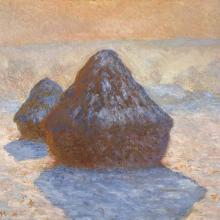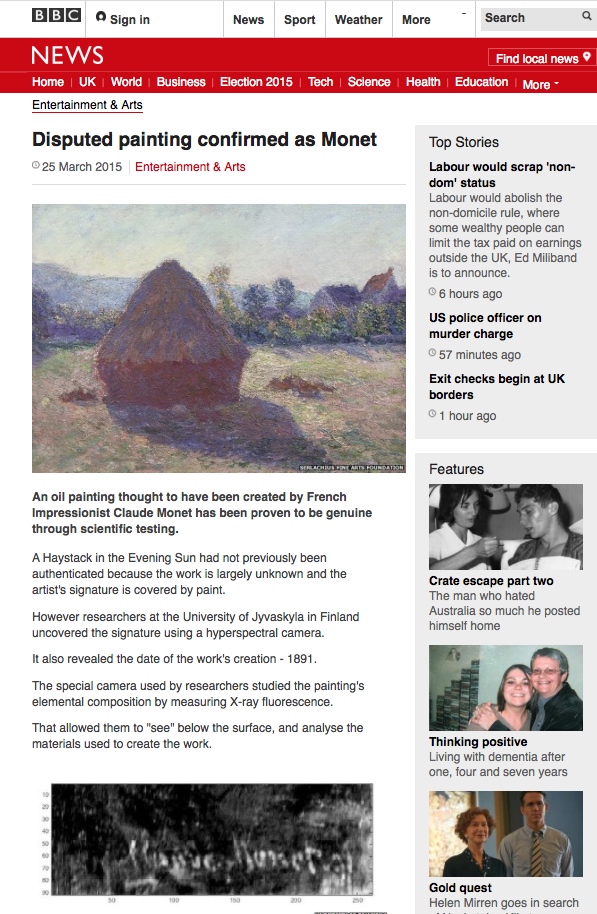
RHYS FULLERTON ON CLAUDE MONET'S HAYSTACKS: SNOW EFFECT
I admit that this painting is not Monet’s greatest, writes Rhys Fullerton. I agree that it’s not one of the best works in the National Gallery of Scotland’s collection.
I’ll concede that even within the Impressionism section, where this painting sits, there are other works that are more skilfully executed and more attractive in colour.
So why is this one my favourite?

Last year a Nazi hoard of stolen art was discovered in a Swiss house and a German flat. One of the Monet paintings discovered there hadn’t been seen in colour for over 75 years. Recently in Finland, another of Monet’s Haystacks, which had been disputed as a genuine work, was finally authenticated. It is now the first Monet painting to be held in a Finnish public collection.
I’ve been fascinated by Monet ever since a trip to Paris years ago. Paris is home to many of Monet’s finest works, and the Nymphéas series in the oval room at the Musée de l'Orangerie is in my opinion his greatest, and yet it’s not my favourite.

The winter light is truly beautiful and the whole painting creates a calming effect. I like how the background is a misty haze and the shadow of the first haystack is cut off by the frame.
Between 1888 and 1891, Monet completed over 30 paintings of haystacks during different times and seasons. I find it astonishing that he painted so many. This became a project for him and a challenge. He documented something simple for over a year and was able to bring a fresh perspective to each study.

But if I had moved to New York, would Jackson Pollock have had a similar effect? If I'd gone to Paris, would another Monet be my favourite or even the overly popular Mona Lisa by Leonardo da Vinci?
In the age of the Internet, nothing is out of reach, and even artworks thousands of miles away can be easily accessed, but it’s not the same as viewing up close. Being able to see the brushstrokes and admire the effort that’s gone into creating a painting is the reason we go to art galleries.
Perhaps having something as a favourite is not necessarily down to it being pleasing on the eye. It could be so much more than that; it could be due to an emotional connection with a time, a place or person.
Whatever the reason, I’m lucky enough to have my favourite painting close to home and I intend to make the most of it.
Do you have a favourite painting, accessible on foot from anywhere in Greater Spurtleshire? If so, we'd love to hear about it. We''re interested in local people's responses to locally available artworks. Just tell us in 20–200 words about an image that quickens you. Send it to spurtle@hotmail.co.uk
